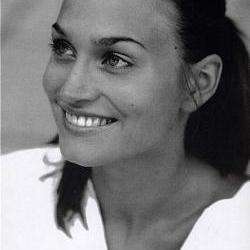After struggling to effectively cast Nabucco since its belated Staatsoper premiere in 2001, the current cast, initially billed as Anna Netrebko's role debut before she withdrew citing a need for shoulder surgery, is finally something worth listening to, if not seeing. In the title role, baritone Amartuvshin Enkhbat was an imposing presence with a voice to match. He dominated as Nabucco, making up with power and precision what was occasionally lacking in legato. The character of Abigaille, considered a nearly unsingable role, was sung by María José Siri, who inverted Enkbat’s strengths, prioritising tremendous legato and vibrant passion over cleanliness. Siri was most impressive in her upper and mid-registers, but also showed impressive vocal control by flaunting her ability to sing messa di voce – and threading the needle in true spinto fashion to great effect.
Roberto Tagliavini was an engaging Zaccaria, who opened with a strong “D'Egitto la sui lidi”, whereas Freddie de Tommaso’s Ismaele improved as the night continued, his tenor squillo warming after a slightly tightly wound start. Fellow ensemble member, mezzo soprano Szilvia Vörös was likewise impressive out of the gate as Abigaille’s rival and supposed sister, Fenena.
The State Opera Orchestra (i.e. the Wiener Philharmoniker) sounded fabulous under the leadership of Paolo Carignani, who drove them furiously through the opera’s more dramatic moments and pulled the massive ensemble back to refreshing lightness in support of the singers when required, thereby allowing solo winds, strings and brass their virtuosic moments in the sun. The choral numbers, critical to this opera, were generally well-sung (choral direction, Thomas Lang), though in a repertory house one could likely always use an extra rehearsal. Entrances were not always ideal, and the chorus had difficulty aligning their tempo with the orchestra’s in the quicker numbers. The singers had much to work against— as in the case of the Chorus of the Hebrew Slaves in Act 3, in which the huge chorus begins lying down with only a dull grey backdrop visible – they occasionally paid the price acoustically. It is to their credit alone that after being allowed to stand midway through the number, they sang sensitively enough, delivering their final tones with such piano subtlety, that it ended as a highlight.
A musically fit Nabucco cannot, however, resuscitate Günter Krämer's dull production. From the bland modern setting – men and women in unremarkable dress (Falk Bauer), the central prop a chrome and glass desk, and especially Hebrew text projected onto a scrim (a technology which has not improved with age since 2001) – to blacking out the upper 5/6ths of the stage for most of the first act, the stage designs by Manfred Voss and Petra Buchholz manage to make Verdi's violent tale of war, destruction, betrayal and illumination seem boring. There are a few atmospheric tableaus – the dancing ballerina to a phonograph during the overture, the electronic “melting” of the text when the Babylonian king is struck with madness, and the mass of captured Jews holding photographs, ostensibly of their lost relatives – but they seem randomly chosen, with little relation to each other or the story. One would hope that after twenty years that the Haus am Ring might finally put Krämer’s reading out of its misery and try to do better by Verdi’s first smash hit.




